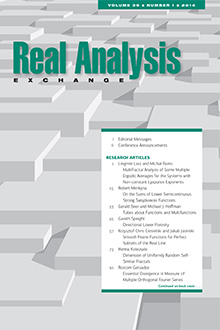Abstract
Consider a fixed differentiable curve $K$ (which is the boundary of a convex domain) and a family indexed by $\lambda\in [0,1]$ of differentiable curves $L = L_\lambda$ such that they are the boundary of convex (connected) domains $A_\lambda$. Suppose that for $\lambda_1<\lambda_2$ we have $A_{\lambda_1}\subset A_{\lambda_2}$. Then, the number of $n$-Poncelet pairs is given by $\frac{e (n)}{2}$, where $e(n)$ is the number of natural numbers $m$ smaller than $n$ and which satisfies mcd$(m,n)=1$. The curve $K$ does not have to be part of the family. In order to show this result we consider an associated billiard transformation and a twist map which preserves area. We use Aubry-Mather theory and the rotation number of invariant curves to obtain our main result. In the last section we estimate the derivative of the rotation number of a general twist map using some properties of the continued fraction expansion.
Citation
Artur O. Lopes. Marcos Sebastiani. "Poncelet Paire and the Twist Map Associated to the Poncelet Billiard." Real Anal. Exchange 35 (2) 355 - 374, 2009/2010.
Information





